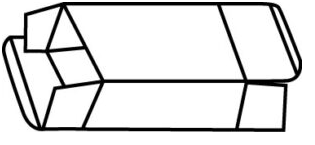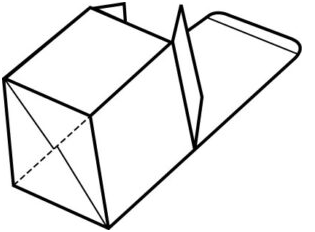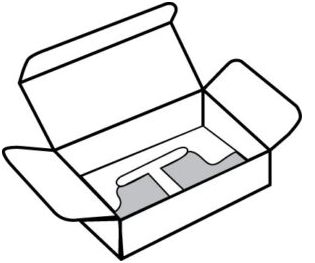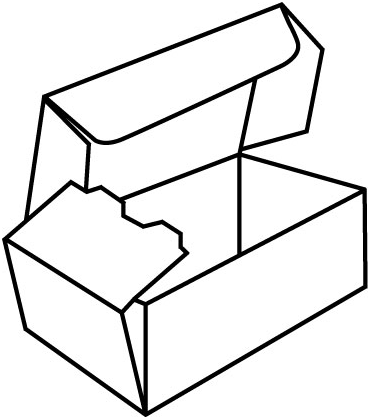Straight Tuck End (STE)
Straight tuck end cartons are constructed with each end folding and locking on the same side.
The STE can provide better graphics presentation because both tucks are positioned at the back of the box giving the front of the carton a clean distraction-free appearance.
A fifth panel can be added to the carton to create a hang hole or provide additional space for graphics.


Reverse Tuck End (RTE)
Reverse tuck end cartons are constructed like the STE carton, but the tucks are reversed and lock on opposite sides.
The main advantage of the RTE vs. STE is lower unit cost because the RTE can be printed more efficiently on a press sheet.
Essentially, the reverse tuck end design sacrifices the clean frontal presentation the straight tuck end carton offers in exchange for a lower unit price.
Tuck Top Auto Bottom (TTAB)
Tuck top auto bottom cartons are used in many different applications because they can be assembled and loaded quickly by hand.
As the name states, the top of the chipboard box tucks into the carton to secure the product and the bottom is automatically formed when first erecting the carton.


Tuck Top Snap Lock (TTSLB)
Tuck top snap lock bottom cartons are the same as the tuck top auto bottom cartons with the exception that the bottom does not come pre-glued.
The snap lock bottom, also referred to as a 1-2-3 bottom, consists of four flaps that are folded and locked together to form the bottom of the chipboard box.
The image below illustrates how the 1-2-3 bottom is constructed to form the bottom of the box. The snap lock bottom is stronger than the auto bottom and less expensive to manufacture; the trade-off is longer time to assemble compared to the auto bottom carton.
Rolled End Tuck Top (TTRE)
Rolled end tuck top cartons are unglued boxes that must be folded and assembled prior to placing the product inside.
The sides with the rolled edges have three total layers of board for added strength.
The image below illustrates how the rolled end tuck top carton is folding into a box. It also shows the tuck top that is present in many folding carton styles.
A panel can be added to the front of the box that folds back into the inside creating cavities for the product or additional marketing space.

